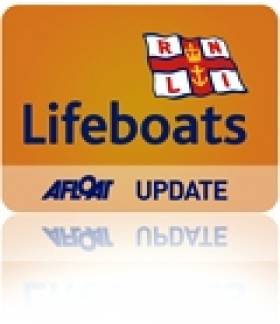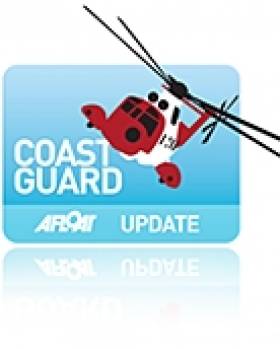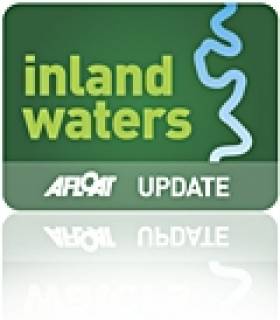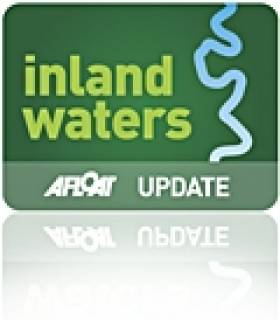Displaying items by tag: canoe
Irish Solo Circumnavigation by Kayak Approaches Dublin
Elaine 'Shooter' Alexander's epic challenge to become the first woman from Northern Ireland to circumnavigate Ireland by kayak is approaching Dublin's coastline.
The challenge will involve a solo voyage of 1000 miles battling tides, headlands, cliffs, not to mention unpredictable weather.
Elaine is just one week into her challenge having taken on a constant barrage of strong head winds en route to Dublin. She is currently just north of Drogheda and weather pending hopes to be in North Dublin (Skerries, Howth) tomorrow, passing Dublin Bay Friday, and South Dublin (Bray and Greystones) Saturday.
She is camping on route and would really appreciate somewhere to shower, store her boat etc close to the sea. You can see exactly where she is by scrolling down this post.
Entry for Canoe Slalom Team Trials Closes This Weekend
Entry closes this Sunday for the Canoeing Ireland slalom team trials and selection races, scheduled for 16-17 April.
Canoeists hoping for selecton must compete in a total of three events over the weekend. at the Sluice Weir in Lucan, Co Dublin.
Entry forms are available from the Canoeing Ireland website HERE.
Entries must be submitted by e-mail before 5pm on Sunday 10 April, with signed forms payment sent as soon as possible to the Irish Canoe Union.
Bangor Lifeboat Rescues Two Canoeists
Bangor Lifeboat launched at 11:40 am on Monday 24th January to rescue two canoeists from a stretch of water lying between the Copeland Island and Donaghadee known locally as the Donaghadee Sound. One of the canoeists had apparently entered the water and was in difficulty.
Belfast Coastguard requested RNLI Bangor Lifeboat to launch.
Within minutes of the rescue pagers being activated, Bangor volunteer crew had assembled and had launched the RNLI's fast response Atlantic 85 type lifeboat the 'Jessie Hillyard '.
With a top speed of 35 knots Bangor Lifeboat quickly arrived on scene.
The Fishery Protection vessel also received the rescue alert and was by minutes the first vessel on the scene. With the Fishery Protection vessel providing a weather lee, crew from Bangor Lifeboat quickly plucked the exhausted canoeist from the water. The second canoeist was then brought aboard Bangor Lifeboat along with both canoes.
Donaghadee Lifeboat who also launched to this rescue stood close by to offer additional medical support if required.
Bangor Lifeboat accompanied by Donaghadee Lifeboat returned to Donaghadee Harbour and both canoeists were landed safely ashore.
Ewan Scott, helmsman onboard Bangor Lifeboat praised the actions of both volunteer crews. He said 'The dedication and commitment of both Bangor and Donaghadee volunteer crews is evident in the professional manner in which they undertook this rescue' He added 'We're happy that both canoeists are now safely ashore.'
Related Safety posts
RNLI Lifeboats in Ireland
Safety News
Rescue News from RNLI Lifeboats in Ireland
Coast Guard News from Ireland
Water Safety News from Ireland
Marine Casualty Investigation Board News
Marine Warnings
Two Canoeists Call for Help from Belfast Coastguard
The emergency call stated that the two men, both in their early 50s, were off Copeland Sound between the coast and Donaghadee. Both men were wearing lifejackets. The man in difficulty was exhausted and needed assistance. The seas on scene were described as having a heavy swell.
Both the Bangor and Donaghadee RNLI inshore lifeboats were asked to launch and a fisheries patrol vessel, the 'Queen of Ulster' also offered assistance after hearing the radio exchanges.
During the incident, Belfast Coastguard kept in contact with the canoeist who had remained in his craft to ensure that both men were aware of the situation and that help was proceeding.
Louis McGookin, Duty Watch Manager at Belfast Coastguard said
"It was clear that the man in the water was absolutely exhausted and simply was unable to get back into his craft. Sea temperatures are at around 8 degrees Celsius at present and hypothermia is an ever present danger in prolonged immersion. Fortunately they were able to contact the Coastguard and using our knowledge of the tides in the area we were able to pinpoint his location. Both men were given a medical check when they arrived back at the shoreline and neither required any treatment."
Related Safety posts
RNLI Lifeboats in Ireland
Safety News
Rescue News from RNLI Lifeboats in Ireland
Coast Guard News from Ireland
Water Safety News from Ireland
Marine Casualty Investigation Board News
Marine Warnings
Guide to Great Canoe Trips in Ireland
An illustrated guide to some of the best canoe tours of Ireland's inland waterways is soon to be published.
Irish Canoe Classics by Eddie Palmer and Tony Monaghan features 34 of the country's finest loughs, canals and rivers - as they can only be seen from a canoe or kayak.
Each comes with a full description, illustrated with vivid colour photos and maps, and all are suitable for open canoes and touring kayaks.
The book will be available from 1 March via Pesda Press.
Talk on Moneypenny Canoe Trail
The talk takes place at the Millennium Arts Centre, William Street, Portadown.
More on Northern Ireland's Canoe trails HERE
More on the Moneypenny trail HERE


































































